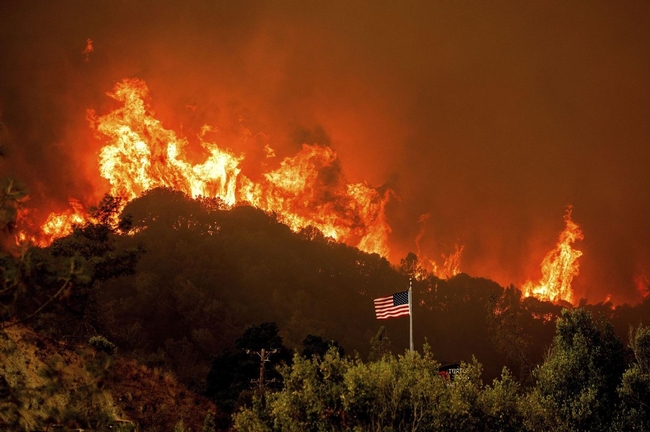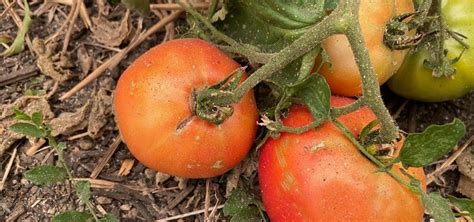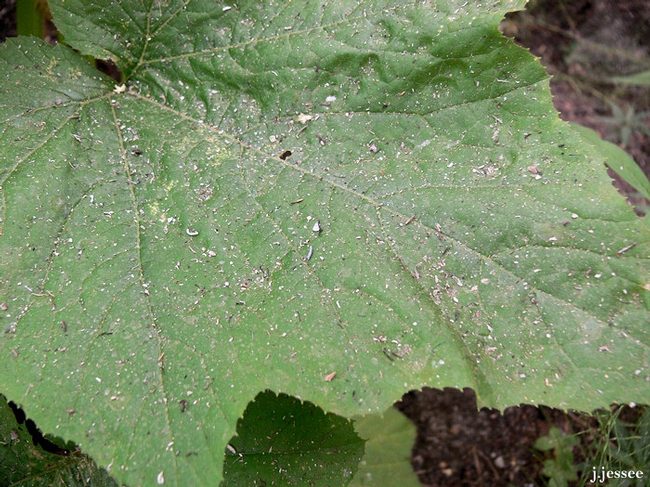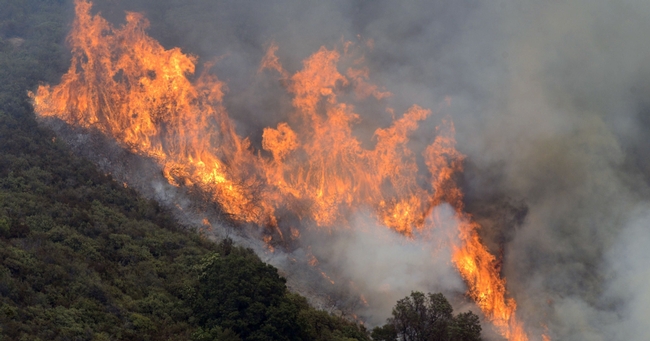By David Layland, UC Master Gardener of Napa County
In early October, I chose fall garden cleanup as the topic for this article. Proper garden sanitation practices are an important part of successfully growing anything. I'm never one to do a project in advance of a deadline so I hadn't started writing when the wildfires struck Napa Valley. Now that the fires have subsided, the topic remains the same but the content is much different than I had planned.
Recovering from a wildfire presents challenges few people have experienced. It's also not a subject covered in Master Gardener training, so I needed to do some research.
For almost two weeks, local people sported face masks to avoid inhaling smoke and the ash floating in the air. Eventually, the air cleared thanks to wind and a little rain. No longer were our treasured N95 face masks needed when venturing outside, or so I thought. The smoke and ash may no longer be obvious, but they are still with us. Ash is on the ground and on plants almost everywhere.
The ash deposited by forest fires is relatively nontoxic and similar to ash in a fireplace. However, any ash will contain small amounts of cancer-causing chemicals. The ash we're dealing with is not just from trees but also homes, cars and anything else that got in the way of a blaze.
I first encountered ash when I harvested some tomatoes shortly after the fires started, although I didn't realize it was ash. The tomatoes had a gritty coating that wasn't normal, so I washed them well before using. This was the right thing to do and what you should do with any vegetables, fruits or herbs grown in the fire zone. If you think the ash might be from a fire that burned plastics, metals or chemicals, err on the safe side and discard these edibles.
Ash deposits vary based on how close you were to the fires and how much the wind dropped. You need to remediate the ash so that it is no longer a personal or environmental risk. Consider the following practices for outdoor ash remediation:
Wear gloves, long-sleeved shirts and long pants to avoid skin contact. If you do get ash on your skin, wash it off as soon as possible.
Avoid stirring up the ash. Do not use leaf blowers or any other device that would propel ash into the air.
Shop vacuums and other common vacuum cleaners do not filter out small particles, but rather exhaust these particles into the air where we can breathe them. Do not use shop vacuums and other nonfiltered vacuums.
Get out your trusty N95-rated face mask and wear it whenever working around ash.
Lightly spray your plants with a hose to remove ash. Wash ash into landscaped areas wherever practical.
Ash on the ground will continue to generate airborne particles when the wind blows, so water the ground regularly.
Do not wash ash into storm drains or anywhere where the ash can contaminate the water supply.
Ash is typically alkaline and won't harm your soil. Napa Valley soil tends to be slightly acidic so adding ash will even help balance the pH a little.
Ash represents the most widespread of the wildfire-recovery challenges. If your garden and landscape experienced intense heat, fire or fire retardant, then you have challenges that are largely beyond the scope of this article. Nevertheless, I will mention a few.
Erosion can occur when fire destroys fallen leaves, branches and plants with shallow roots. Protect bare soil with mulch, such as straw, to prevent erosion until leaves, branches and plants return.
Plants and trees stressed by fire will need irrigation. Water deeply to reach the roots.
Soil may become hydrophobic, meaning it won't absorb water. If this happens, loosen the soil to break up the surface and apply a layer of organic matter such as straw. This will help the soil absorb water.
I hope these recommendations will help everyone to recover from the recent fires.
Free Workshop
The Master Gardeners will hold a free online workshop on “Ash in Your Garden” on Saturday, Oct. 3, from 1-2 p.m. Learn about the effects of ash on soil, plants and produce. To register, visit napamg.ucanr.edu
The UC Master Gardeners of Napa County are volunteers who provide University of California research-based information on home gardening. To find out more about home gardening or upcoming programs, visit the Master Gardener website (napamg.ucanr.edu). Our office is temporarily closed but we are answering questions remotely and by email. Send your gardening questions to mastergardeners@countyofnapa.org or leave a phone message at 707-253-4143 and a Master Gardener will respond shortly.
Attached Images:



